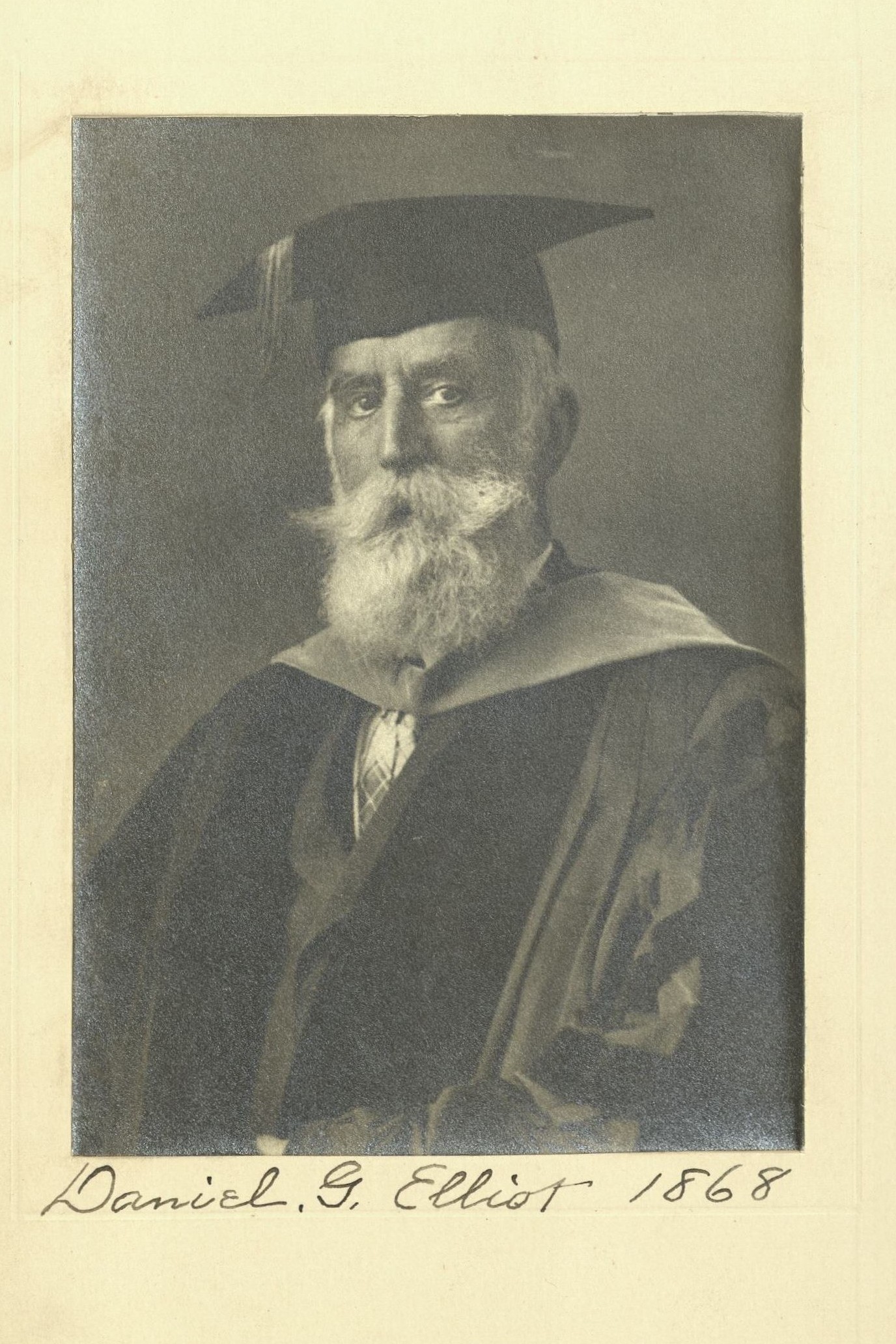Zoologist
Centurion, 1868–1915
Born 7 March 1835 in New York (Manhattan), New York
Died 22 December 1915 in New York (Manhattan), New York
Buried Woodlawn Cemetery , Bronx, New York
, Bronx, New York
Proposed by William J. Hays, Cornelius R. Agnew, and Charles F. Chandler
Elected 3 October 1868 at age thirty-three
Archivist’s Note: Brother of George T. Elliot; uncle of George T. Elliot
Proposer of:
Century Memorial
With Professor Putnam we may set the splendid figure of Daniel Giraud Elliot, who for more years than some of us can count was the guide and counselor and benefactor of the American Natural History Museum in the wide field of birds and mammals. No man has done more for that great institution. As early as 1869 he made over to the Museum the large collection of North American birds, which he had been gathering since boyhood. It was the first material of any kind owned by the Museum, and among the birds were five specimens of the long since extinct Labrador duck, which vie with specimens of the great auk in value. From that time on Elliot devoted his life to collecting and exploring for the Museum in all parts of the world, and to advising with its management when in New York. Abroad, he purchased collection after collection with funds provided for him; or collected for himself and gave to the Museum. As a youth he had collected in the West Indies and Brazil; then in Malta, in Sicily, and along the Nile. He visited Moab, Damascus, and the Lebanon Mountains. Later he made two zoölogical trips to Alaska, one of them with the Harriman expedition. The Field Museum of Chicago sent him into the heart of Africa for specimens; and the expedition was most successful. He also explored the little-known Olympic Mountains in our own Northwest.
With 1906 he began the preparation of his great work on the Primates; and lacking the material in this country, he went abroad to examine the monkeys and lemurs in the museums and zoölogical gardens of Europe. He went again to Egypt and up the Nile, and thence to India, Ceylon, Singapore, Java, Batavia, Canton, and Shanghai, and to Japan, making researches always, and returning home to our Museum by the way of San Francisco. The Review of the Primates at last was published in three quarto volumes.
This man, so reticent of his attainment, had already published many folio monographs upon the different families of birds, upon the Grouse, the Ant Thrushes, the Pheasants, the Hornbills, the Birds of Paradise, the Shore Birds, the Game Birds, the Wild Fowl of North America. He had written books upon the Felidæ or Cat Family, upon The Mammals of North America and the Adjacent Seas, upon The Land and Sea Animals of Middle America and the West Indies. He had contributed several hundred papers to American and foreign scientific journals. He possessed numerous degrees; he belonged to many learned societies; he had been decorated ten times by European governments for his labors in natural science. He became a member of The Century in 1868. How well we all liked him here, at the lunch table, in the billiard room, on the Board of Management! And we should have learned from him far more than ever we did, had not the nonchalance of this gentleman as touching his achievements often kept us, to our great loss, from suspecting how much he knew.
Henry Osborn Taylor
1916 Century Association Yearbook

